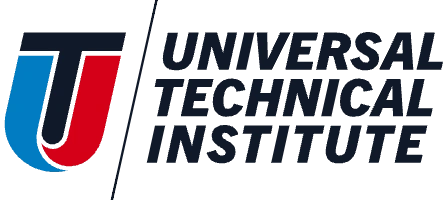Every year, wind turbines produce about 434 billion kilowatts (kWh) of electricity a year. Just 26 kWh of energy can power an entire home for a day. Wind is the third largest source of electricity in the United States with 40 of the 50 states having at least one wind farm.
That explains why wind turbine service technician is one of the fastest-growing jobs in the United States. The U.S. Bureau of Labor Statistics (BLS) reports that between 2022 and 2032, the job outlook for these positions is projected to grow 45%.63
Read more to learn about how much energy a wind turbine can produce and how it provides electricity throughout the country.
What Is the Average Energy Output of a Wind Turbine?
Depending on size, location and model, wind turbines all have different energy outputs. There are two basic types of wind turbines: the horizontal-axis turbine (HAWT) and the vertical-axis turbine (VAWT). Both are ideal for different purposes and have different models to make them more efficient.
How Does a VAWT Work and What Is Its Energy Output?
VAWTs are a special type of wind turbine that can use wind from different directions. Because its main rotor shaft is pointed vertically, a VAWT doesn't need to be pointed toward the wind to work. This type of turbine is perfect for areas that don’t have stable wind power.
There are two types of VAWTs: the Savonius vertical-axis wind turbine and the Darrieus vertical-axis wind turbine. The Savonius model is typically smaller than other wind turbines and is optimal for areas with low wind speeds. It can produce about 172 kWh of energy per day.
The Darrieus model is quieter than other turbines and is ideal for areas where noise is a concern. It can produce about 230 to 11,300 kWh of energy per day depending on the size. Darrieus VAWTs are also known as “eggbeater” turbines.
How Does a HAWT Work and What Is Its Energy Output?
HAWTs are currently the most efficient type of wind turbine. Even if they do rely on the direction of the wind to produce electricity, their rotors point them toward the right direction. Types of HAWTs are determined by the number of blades they have. There is the single-bladed, two-bladed, three-bladed and multi-bladed.
Overall, HAWTs are the more common type of turbine and are also a lot larger than VAWTs. How much electricity can a single HAWT wind turbine generate in a day? About 26.1 megawatts (MW). One MW is 1,000 kWh, so HAWTs can provide a lot more electricity!
Read: How Do Wind Turbines Work?
What Factors Affect the Energy Production of a Wind Turbine?
The most efficient setting for a functioning wind turbine is an area that has regular wind flow. Strong winds can produce more energy. However, if the winds are too strong and not constant, the wind turbine will not produce as much energy. The three main factors that affect the energy production of a wind turbine are the wind speed, air density and size of the blades.
How Much Energy Does a Wind Turbine Produce Per Year?
A wind farm, also known as a wind power station, is an area where a lot of large wind turbines are grouped together. On average, there are about 50 wind turbines per farm, and typically, one of these turbines can produce 6 million kWh per year. That would mean that one wind farm could produce 300,000 MW a year. That is enough electricity to power millions of homes.
How Does the Size of a Wind Turbine Affect Its Energy Production?
Size is a big factor when it comes to the amount of energy a wind turbine can produce. No matter what type of turbine, even in an optimal location, a small wind turbine can realistically only produce so much power every hour. Harvesting wind power has a lot to do with the length of the blades. The taller the tower, the longer the blades can be and the more electricity can be produced.
What Does a Wind Turbine Technician Do?
Wind turbine technicians, also known as wind techs, service and maintain wind turbines. This type of job is very hands-on, gives opportunities for traveling to job sites and is generally done outdoors.
Typical job duties for wind techs include:
- Help engineers install new wind turbines
- Check the physical condition of wind turbine towers
- Climb the towers to examine or fix turbine equipment
- Test and solve issues with electrical, mechanical and hydraulic parts and systems
- Replace worn or faulty components
- Gather turbine data for testing or research
- Maintain underground transmission systems
How Much Does a Wind Turbine Technician Make?
According to the Bureau of Labor Statistics (BLS), the average salary for wind turbine technicians in the United States was $57,320 in May 2022.61 Keep in mind that salary depends on several factors, including experience, employer, demand and cost of living in the area.
Read: What is a Field Service Technician?
Want To Pursue a Career as a Wind Technician?
Gain the skills needed to install and service wind machinery! We offer a Wind Turbine Technician program that can help prepare you for a career in the industry.1
Request more information to learn more about our campuses, programs and the application process. Ready to get started? Enroll today!
Campuses That Offer Wind Technician Training
Universal Technical Institute of Illinois, Inc. is approved by the Division of Private Business and Vocational Schools of the Illinois Board of Higher Education.



